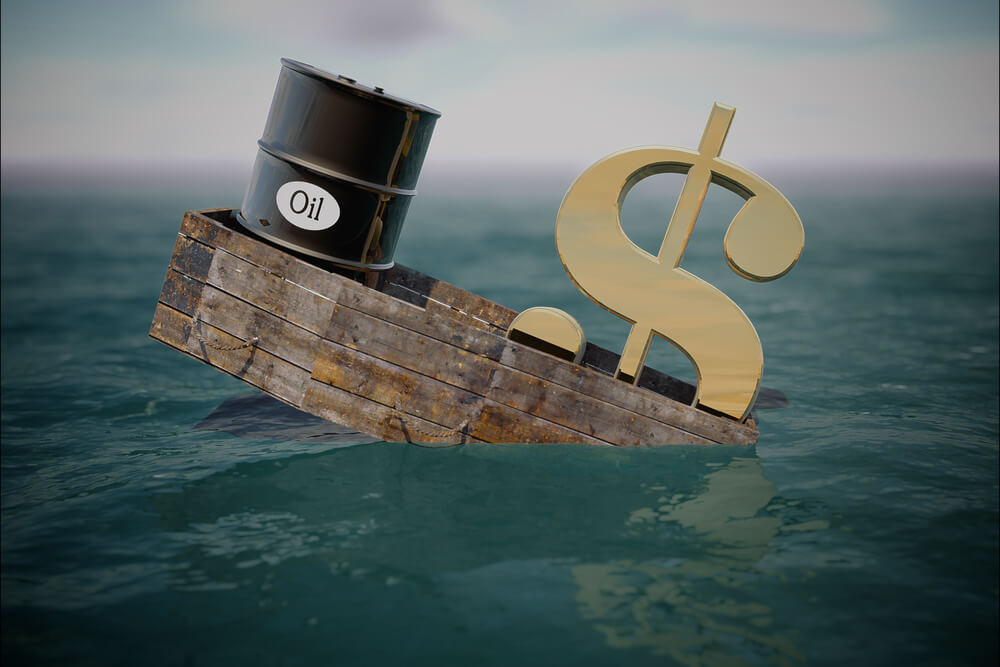PERHAM, MINNESOTA — A few months ago, Kate and I sold some gold and bought a basket of tanker stocks.
On Monday, I explained how tankers are a “feast or famine” business.
Most of the time, they’re terrible businesses. Occasionally, they make you rich.
The key to success investing in tankers is to capture the sporadic feasts and avoid the long famines.
More below. But first…
Epic Road Trip
Greetings from Minnesota!
My family and I are on an epic six-month road trip around America. We’re eating at fast food restaurants, camping under the stars, and driving about 200 miles a day, on average.
We’re now in Perham, Minnesota, a small town on the Great Northern Plains. It’s a farming town. The most visible landmark in Perham is a gigantic grain elevator.
Perham also sits on a busy railroad track. It’s BNSF Railway’s Northern Transcontinental route, the most important rail corridor in the American northwest.
The track runs from Seattle to Chicago and carries over 50 trains a day. Fifteen years ago, I traveled the whole way along it, sitting in a boxcar carrying cotton!
Anyway, we came to Perham to watch trains.
Later we head south, to Iowa, where we’ll visit a hog farm.
After Iowa, we’ll head west to South Dakota, where we’ll visit Mount Rushmore.
(Our son, Dusty, 12, loves and admires Teddy Roosevelt. He specifically asked us to take him to Mount Rushmore before we started this road trip.)
Temporary Lull
Going back to oil tankers, on Monday I explained the meaning of a “tight” tanker market. I hypothesized that we’ve just entered a period of “feast” in the tanker business.
When we bought our oil tanker stocks a couple of months ago, we were right in the middle of a “surge” period.
The COVID lockdown caused a sudden 20% drop in demand for crude oil and refined petroleum products.
Producers couldn’t have anticipated this. And they had nowhere to store their excess production. So they booked tankers — also known as “floating storage” — to store their petroleum products.
They pulled 125 of the biggest tankers (called VLCCs) and 60 of the next biggest tankers (Suezmaxes) out of the fleet.
Then, there weren’t enough tankers to move oil around. Oil tanker leasing rates jumped from $20,000 a day to $300,000 a day, virtually overnight.
Since then, crude oil demand has rebounded. Floating storage is being unwound. Many tankers have returned to the fleet.
Now there are too many ships. Plus, OPEC isn’t shipping as much oil recently. Tanker lease rates have returned to $20,000 again.
We’re also in the low season — that time of year when, for 19 of the past 20 years, the tanker industry falls into the doldrums.
In other words, we’re in the “lull” or “pause” between surges. That’s why tanker stocks have fallen since we bought them.
Now, as shipowners, we’re taking it easy, passing the time while we wait for the next busy (or surge) period.
When you look at it like this, it’s just a matter of time… almost like waiting for a bus… until the next time we get paid.
What will cause it? I have no idea. More sanctions? A war? COVID crisis affecting crews? Another COVID wave causing storage for crude oil?
Either way, the next surge is coming. We just have to wait.
Next, we’ll look at how the tanker stocks have been doing in the stock market…
Tom Dyson
Editor, Postcards From the Fringe
• This article was originally published by Bonner & Partners. You can learn more about Bill and Bill Bonner’s Diary right here.
